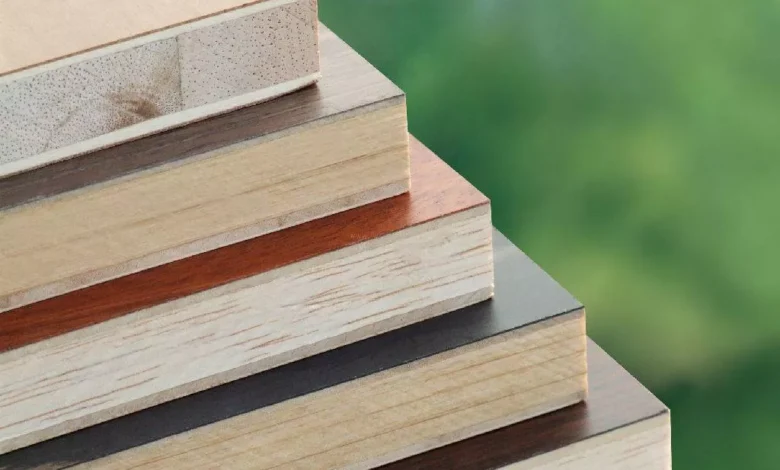Understanding the Best Plywood in India and the Versatility of Blockboard

In the world of construction and interior design, choosing the right wood material is crucial to ensuring quality, longevity, and aesthetic appeal. Among the many materials available, two have stood out for their performance and popularity—plywood and blockboard. With a growing number of homeowners and professionals looking for durable and stylish solutions, understanding these materials and identifying the best plywood in India has become increasingly important.
Plywood has long been a trusted material in Indian households and commercial spaces alike. It is made by bonding multiple layers of wood veneer, each with its grain running perpendicular to the one below it. This cross-layered construction lends plywood its strength, flexibility, and resistance to warping. Over time, plywood has become a staple in a variety of applications, from furniture to flooring and especially in cabinetry and door panels.
With the Indian market offering a wide range of plywood options, determining the best plywood in India depends on several factors including quality, durability, finish, and suitability for specific applications. The best products are typically manufactured using hardwood or high-grade softwood veneers, bonded with strong adhesives that resist moisture, heat, and pests. These premium plywoods are often calibrated to uniform thickness, ensuring a smoother surface and better bonding with laminates or veneers.
Indian climate conditions demand materials that can withstand fluctuations in humidity and temperature. The best plywood in India is designed to be weather-resistant, termite-proof, and dimensionally stable, making it ideal for long-term use in kitchens, wardrobes, beds, tables, and even wall paneling. Some of the finest variants also come with fire-retardant properties, especially suitable for commercial and public buildings.
While plywood offers great versatility, another material that complements and often competes with it is blockboard. Blockboard is made by sandwiching a core of solid wood strips between layers of veneer. These strips are typically made from softwood and are arranged edge-to-edge to form a sturdy and lightweight core. The veneer layers on the surface give blockboard its smooth finish and add to its structural integrity.
One of the key advantages of blockboard is its strength along the length. This makes it particularly suitable for manufacturing longer furniture pieces such as bookshelves, doors, tables, and benches. Unlike plywood, which can sometimes bend under its own weight when used in long spans, blockboard remains straight and stable. This resistance to sagging makes blockboard an excellent choice for horizontal applications where length and load-bearing capacity are critical.
Blockboard is also lighter than plywood, which makes it easier to transport, handle, and install. This weight advantage is especially useful in interior design projects that require large panels. Its resistance to bending, combined with ease of handling, means that carpenters and designers often prefer blockboard for projects that need quick installation without compromising on strength.
A common question among consumers and professionals alike is when to choose plywood and when to opt for blockboard. The answer lies in understanding the application. For instance, if the project involves areas exposed to moisture, such as kitchens or bathrooms, marine-grade plywood would be a better choice due to its superior water resistance. On the other hand, for making large cabinet shutters or long writing tables, blockboard offers better dimensional stability and ease of work.
The aesthetics of both plywood and blockboard have also evolved over time. Modern blockboards come with high-quality finishes that can rival those of the best plywood products in India. They can be laminated, painted, or veneered to achieve the desired look. This adaptability allows both materials to fit into a range of design styles, whether modern, classic, or rustic.
From an environmental standpoint, both plywood and blockboard can be eco-friendly when sourced responsibly. Many Indian manufacturers are now adopting sustainable practices by using plantation wood and low-emission adhesives. This trend is in response to growing consumer awareness around sustainability, leading to a demand for products that are not only functional but also responsible choices for the environment.
Cost is another consideration for many buyers. While the best plywood in India might come at a premium, its durability and performance often justify the investment. Blockboard, on the other hand, offers a more economical solution for specific needs, especially when used in non-moisture-prone areas. Both materials offer excellent value when used appropriately according to their strengths.
In recent years, the Indian furniture and construction industry has witnessed a surge in the use of engineered wood products. This shift is driven by the increasing demand for modular and customized furniture solutions that are quick to assemble, easy to maintain, and visually appealing. Both plywood and blockboard play a key role in fulfilling this demand, and their widespread availability ensures that designers have the flexibility to innovate without limitations.
As homeowners and professionals continue to explore smarter building and furnishing solutions, the importance of understanding the differences between plywood and blockboard cannot be overstated. Choosing the right material for the right application can lead to better performance, improved aesthetics, and long-term satisfaction.
In conclusion, both blockboard and plywood have proven themselves as essential components in modern interior and structural applications. The best plywood in India offers unmatched durability, finish, and resistance to environmental stress, while blockboard provides lightweight strength and stability for long spans and specific use cases. Knowing when and how to use each material can transform your interiors, making them not just more beautiful but also more functional and long-lasting.